
Fundamentals
Imagine your hair as a delicate, living garden, each curl a unique, spiraling bloom. Within this garden, the concept of Curl Integrity represents the inherent vitality and structural wholeness of each strand. It speaks to the hair’s capacity to maintain its natural shape, resilience, and radiant appearance, particularly for those with textured, Black, and mixed-race hair. This isn’t merely about visual appeal; it signifies a deeper, more fundamental state of health that allows your curls to truly flourish.
A curl possessing its full integrity exhibits a remarkable ability to coil and rebound with grace, demonstrating its natural elasticity. It resists breakage, retaining moisture with an effortless ease, and shines with a luminescence reflecting its inner strength. For individuals with richly textured hair, this understanding becomes a cornerstone of their care practices. Preserving this innate wholeness allows for a more joyful and less burdensome hair experience, reducing the challenges of tangles and breakage, and ultimately supporting healthy length retention.
Curl Integrity reflects the hair’s natural vitality, its capacity to maintain inherent shape, and its radiant appearance.

What is a Healthy Curl? Delineation of Basic Characteristics
A healthy curl, regardless of its specific pattern—be it a gentle wave, a springy coil, or a tight zig-zag—shares several fundamental characteristics that signify its integrity. Its natural form is evident, not stretched or distorted by damage. This means a distinct curl pattern, whether loosely defined or tightly wound, remains true to its genetic blueprint.
- Elasticity ❉ A curl with sound integrity stretches gently when pulled, then springs back to its original shape without snapping. This elasticity is a primary indicator of its internal health.
- Moisture Retention ❉ The hair feels soft and pliable, not brittle or rough. It readily absorbs and holds hydration, which is vital for preventing dryness and subsequent damage.
- Smooth Cuticle ❉ The outer layer of the hair, the cuticle, lies flat and smooth. This smooth surface allows light to reflect beautifully, contributing to a natural sheen, and protects the inner cortex from environmental stressors.
- Strength ❉ Such hair resists tearing or splitting, even under gentle manipulation. It does not shed excessively, nor does it break easily when combed or styled.

The Curl’s Inner Life ❉ A Glimpse at Its Structure
Beneath the surface, the integrity of a curl is rooted in its intricate cellular architecture. Each hair strand comprises three primary layers ❉ the cuticle, the cortex, and sometimes, a medulla. The cuticle, composed of overlapping scales, acts as the hair’s protective shield.
Below this lies the cortex, the hair’s powerhouse, housing keratin proteins and melanin, which determine its color. The medulla, a central core, is present in many hair types, especially thicker, textured strands.
Maintaining the cohesion of these layers is paramount for preserving the hair’s natural state. When the cuticle scales are aligned, they protect the cortex, preventing moisture loss and preserving the curl’s structural strength. Damage to this outer layer, however, leaves the inner cortex vulnerable, compromising the curl’s inherent health and vibrancy.
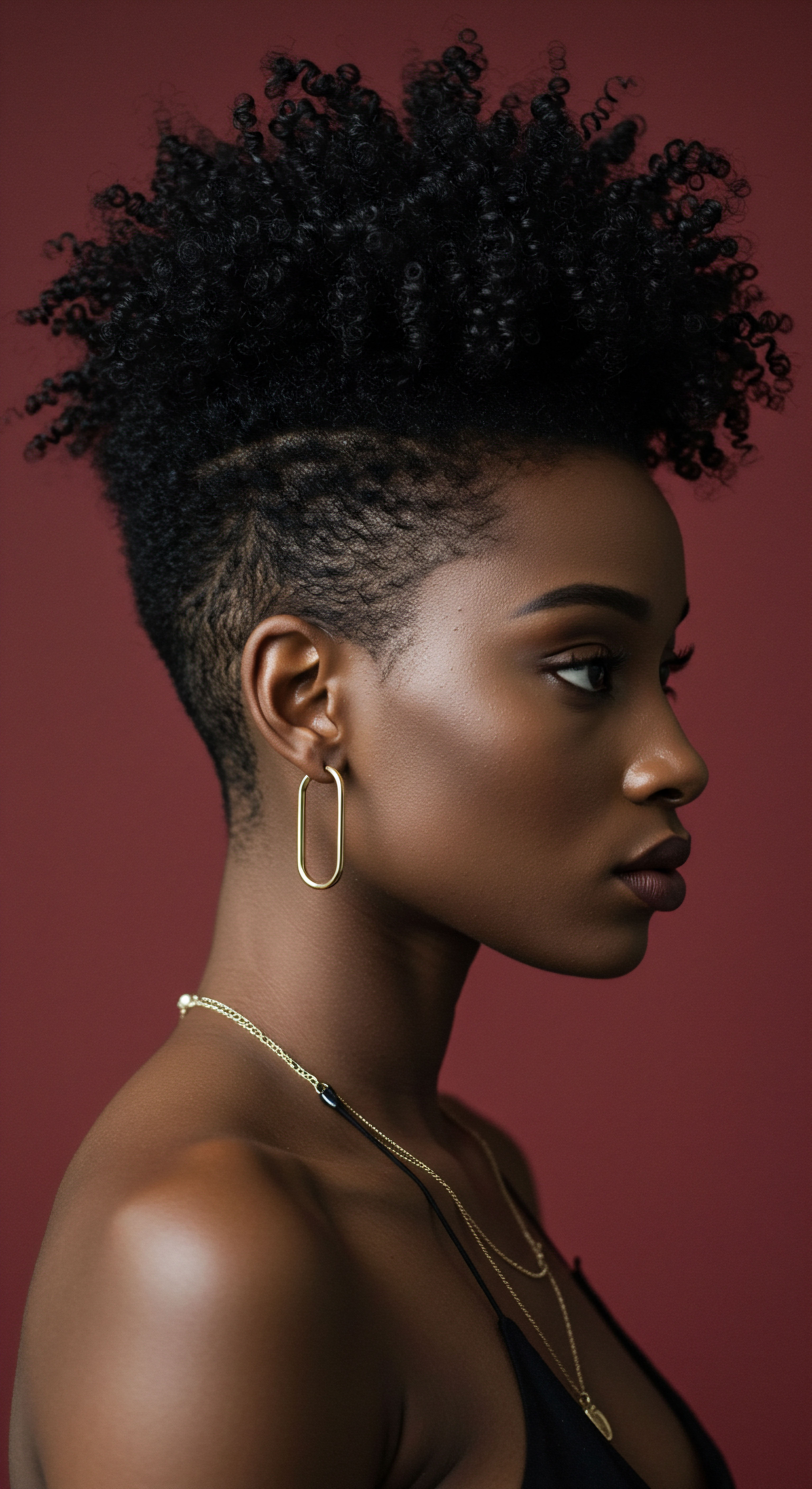
Why This Matters for Coils and Kinks ❉ Unique Structural Considerations
Textured hair, particularly coils and kinks, possesses unique structural properties that make understanding curl integrity especially significant. The elliptical shape of the hair shaft and the numerous twists along its length mean that textured hair often has more points of fragility. These natural bends create areas where the cuticle may be slightly raised or less uniformly laid, potentially leading to increased susceptibility to moisture loss and mechanical damage.
Given these inherent characteristics, the focus on maintaining the integrity of each curl becomes not merely a preference but a foundational principle of care. It underpins the ability to manage the hair effectively, reduce the occurrence of knots and tangles, and foster an environment conducive to healthy growth.
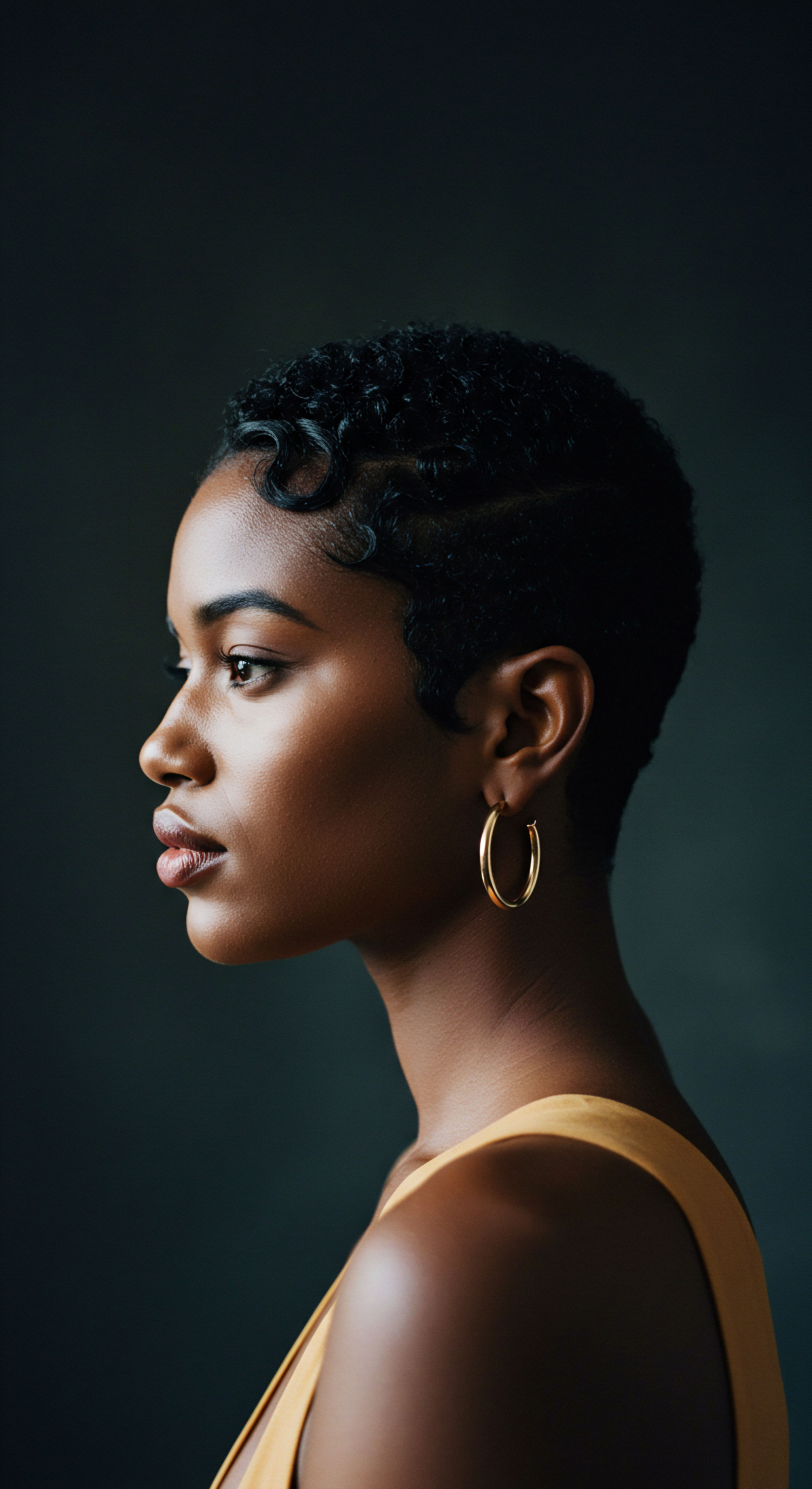
Daily Rituals for Preservation ❉ Simple Steps Towards Wholeness
Nurturing curl integrity begins with simple, mindful daily rituals. Gentle cleansing, designed to remove impurities without stripping the hair’s natural oils, lays the groundwork. Following this, the application of nourishing conditioners helps to smooth the cuticle and infuse the strands with vital moisture.
Protecting the hair during sleep, perhaps with a satin bonnet or pillowcase, minimizes friction that can disturb the cuticle. Detangling with care, using fingers or a wide-tooth comb, always working from ends to roots, prevents unnecessary stress on the curl pattern. These small, consistent actions contribute significantly to maintaining the inherent beauty and strength of textured hair.

Intermediate
Moving beyond the foundational understanding, Curl Integrity at an intermediate level delves into the hair’s structural resilience and optimal function, viewing it not just as a state of being but as a dynamic interplay of factors that influence its sustained health. This perspective acknowledges that while a curl may appear healthy on the surface, its true integrity is determined by its ability to withstand environmental stressors and internal imbalances. It requires a more discerning eye, recognizing the subtle cues your hair provides about its needs.
This deeper comprehension extends to the practical application of knowledge, guiding choices in daily and weekly hair care rituals. It means understanding how product formulations interact with your specific hair type and how various styling methods might either support or diminish the curl’s innate wholeness. For textured hair, where historical practices and societal pressures have often influenced care routines, this intermediate insight becomes a bridge between tradition and scientific understanding, empowering more informed decisions.
Curl Integrity at this stage involves understanding structural resilience, environmental interactions, and historical influences on textured hair.
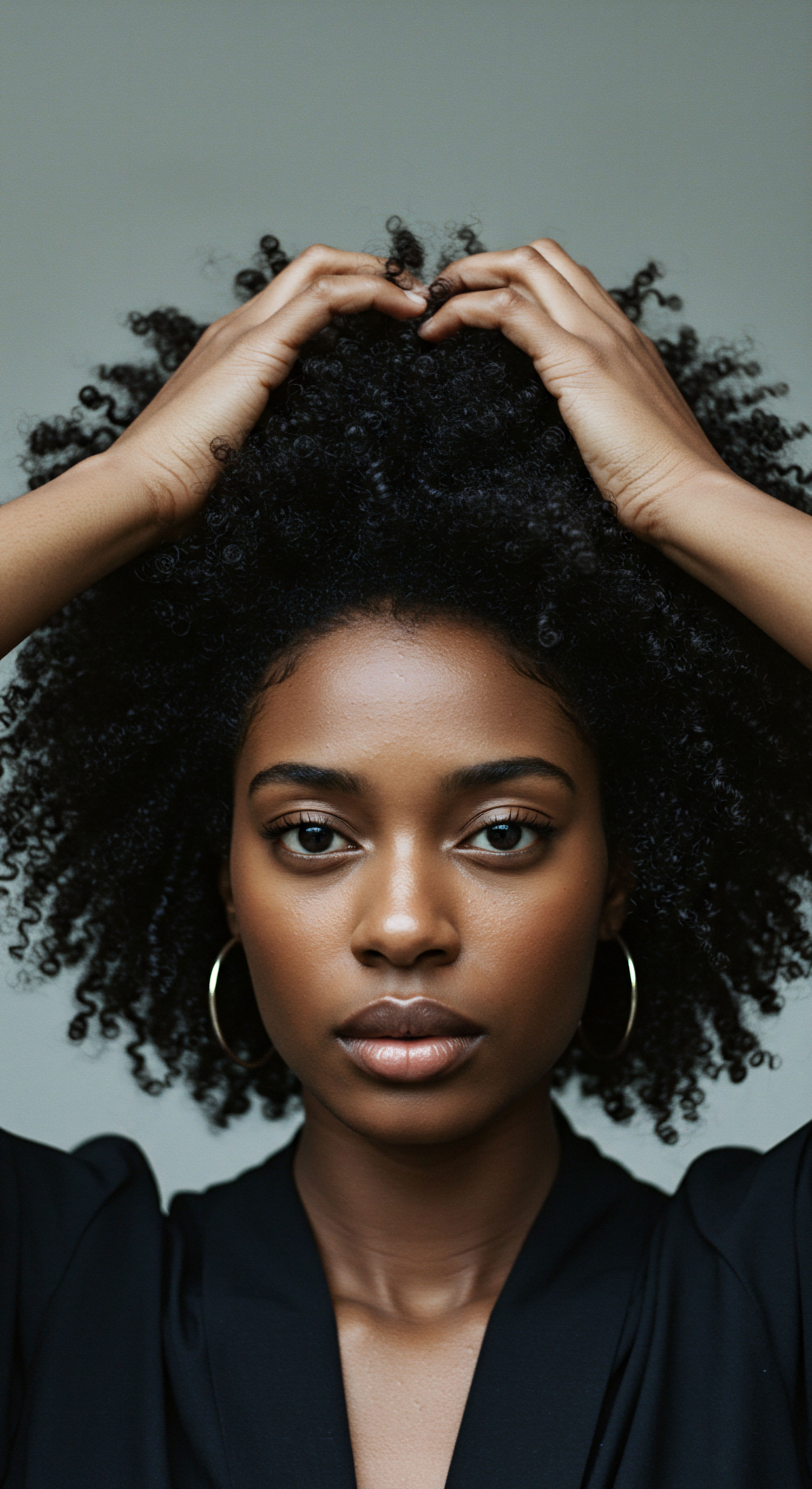
The Architecture of Resilience ❉ A Detailed Look at Hair Components
The robustness of a curl is deeply rooted in its complex internal structure. The cortex, the hair’s central region, is primarily composed of tightly packed keratin proteins, arranged into intricate bundles known as macrofibrils. These proteins are cross-linked by disulfide bonds, which are strong chemical linkages that contribute significantly to the hair’s strength and elasticity.
Surrounding the cortex, the cuticle acts as a protective layer, with its overlapping scales resembling shingles on a roof. A healthy cuticle lies flat, providing a smooth surface that minimizes friction and reflects light.
Interspersed within these structures are lipids and moisture, essential for maintaining pliability and flexibility. When these components are in balance, the hair exhibits optimal mechanical properties, allowing it to stretch and return without damage. Any disruption to this delicate arrangement, whether through chemical treatments or physical manipulation, can compromise the hair’s structural fortitude, leading to reduced integrity.
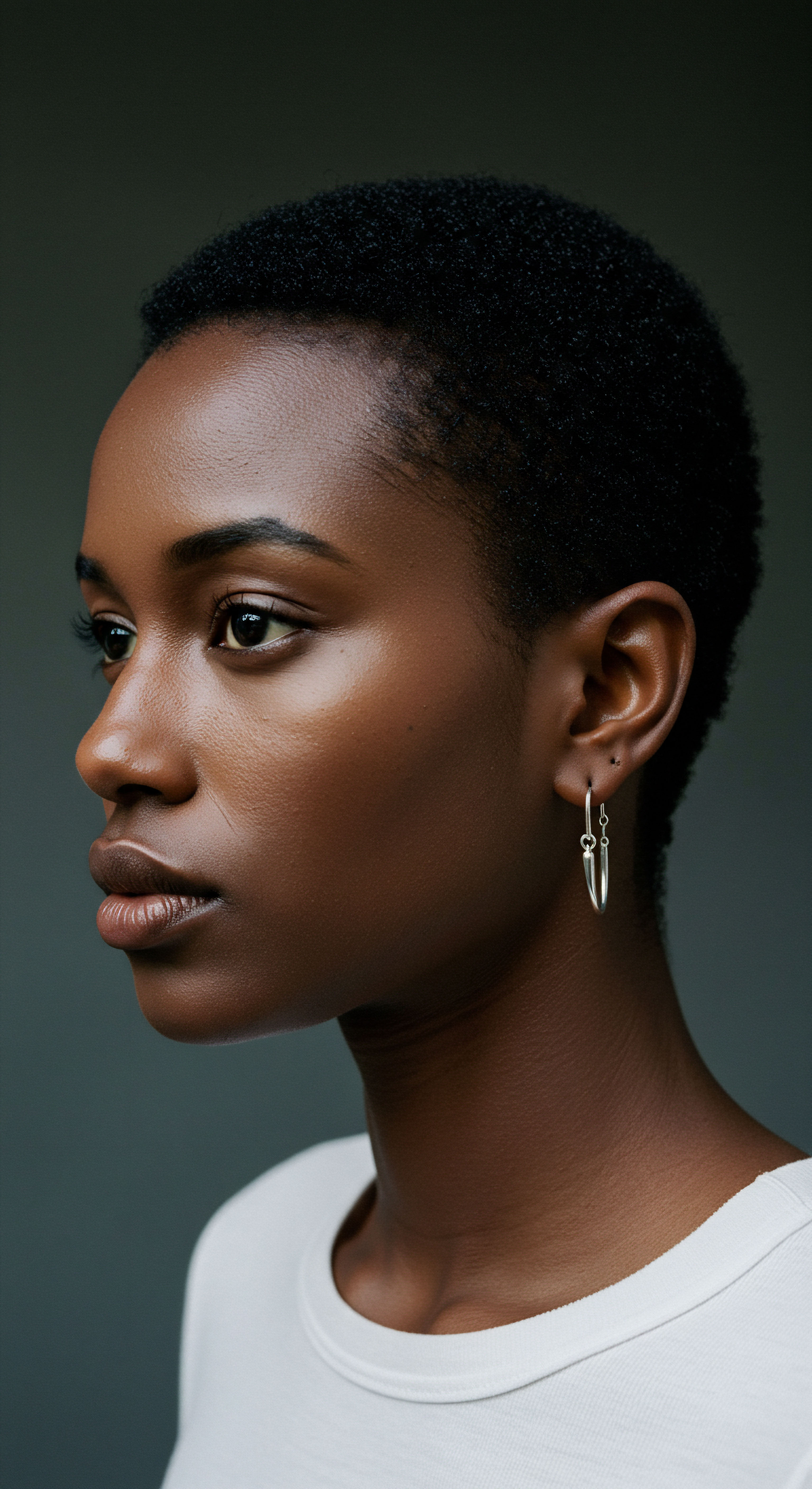
Porosity’s Influence ❉ How It Shapes Curl Integrity
Porosity, the hair’s ability to absorb and retain moisture, plays a pivotal role in maintaining curl integrity. Hair with low porosity has tightly bound cuticle scales, making it resistant to moisture absorption but also prone to product buildup. High porosity hair, conversely, has raised or damaged cuticles, allowing moisture to enter and escape quickly, leading to dryness and frizz.
Understanding your hair’s porosity is fundamental to selecting appropriate products and techniques. For low porosity hair, gentle heat during conditioning can help open the cuticle, allowing for better moisture penetration. For high porosity hair, protein treatments and heavier sealants can help reinforce the cuticle and reduce moisture loss. Aligning your care regimen with your hair’s porosity directly supports its ability to maintain its inherent shape and strength.
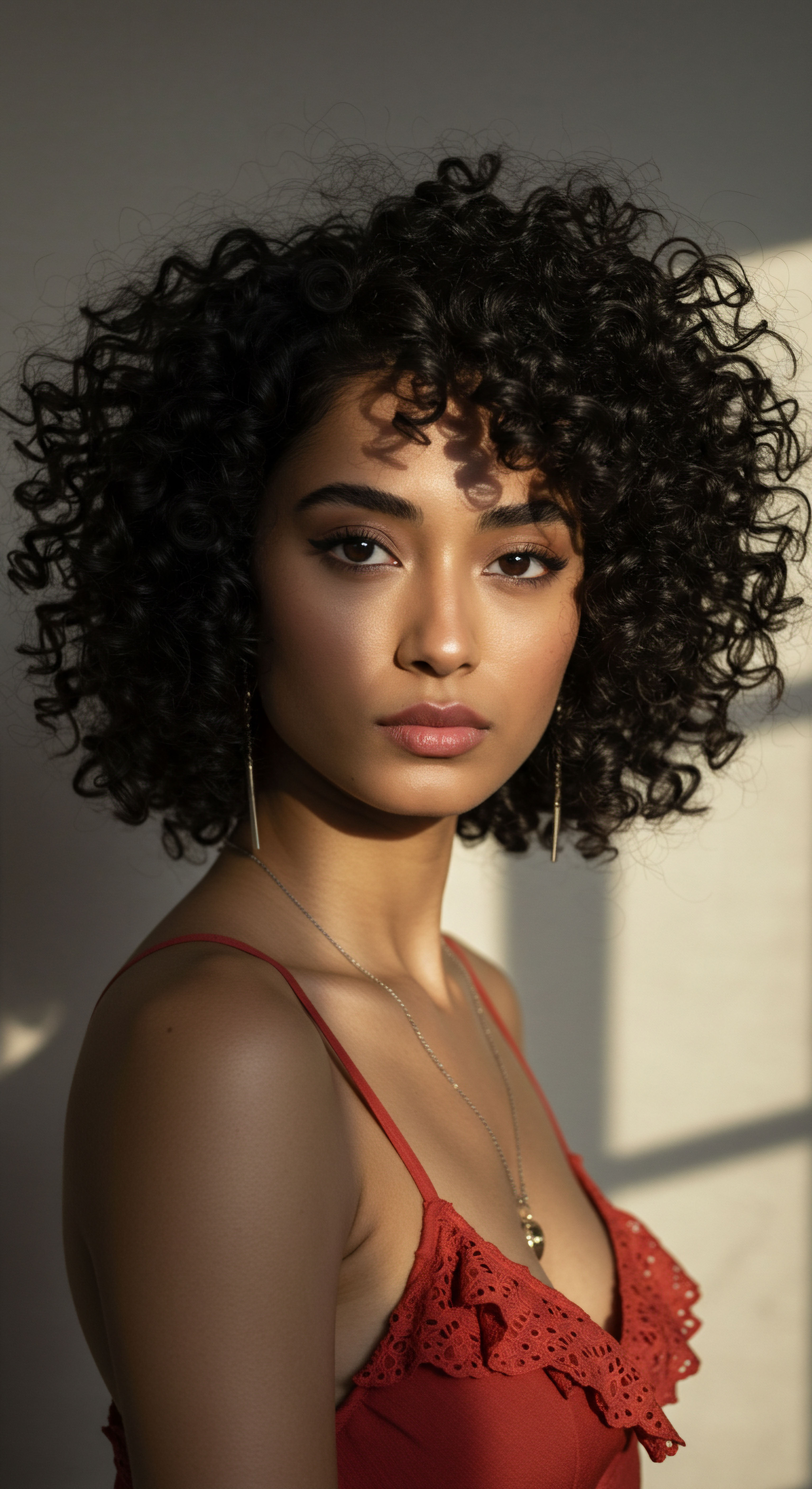
The Balance of Elements ❉ Protein and Moisture
Achieving optimal curl integrity often hinges on a delicate balance between protein and moisture. Proteins, the building blocks of hair, provide strength and structure, while moisture imparts elasticity and softness. An imbalance in either direction can compromise the hair’s natural state.
- Protein Overload ❉ Excessive protein without adequate moisture can make hair stiff, brittle, and prone to breakage. This happens when the hair becomes too rigid, losing its natural pliability.
- Moisture Overload ❉ Too much moisture without sufficient protein can leave hair limp, mushy, and lacking definition. This state makes the hair susceptible to stretching and breakage.
- Strategic Conditioning ❉ Regularly assessing your hair’s response to products helps you adjust your routine. A strand that feels overly stretchy may signal a need for protein, while one that feels dry and rigid might call for more moisture.
This dynamic equilibrium ensures the hair remains supple yet strong, capable of performing its natural function without compromise.

External Adversaries ❉ Damage Types and Their Impact
The journey of maintaining curl integrity is often challenged by various external factors that can diminish the hair’s natural health. Heat styling, with its high temperatures, can denature keratin proteins and lift the cuticle, leading to irreversible damage. Chemical treatments, such as coloring, perms, or relaxers, alter the hair’s disulfide bonds, fundamentally changing its structure and often reducing its strength and elasticity. Mechanical stress, from aggressive detangling or tight styling, can cause physical breakage and cuticle abrasion.
Understanding these adversaries allows for proactive protection. Using heat protectants, opting for gentler styling methods, and carefully considering chemical processes can significantly mitigate damage. Recognizing the signs of compromise—such as increased frizz, loss of curl definition, or excessive shedding—is the first step toward restorative care, guiding you back to a path of enhanced curl integrity.
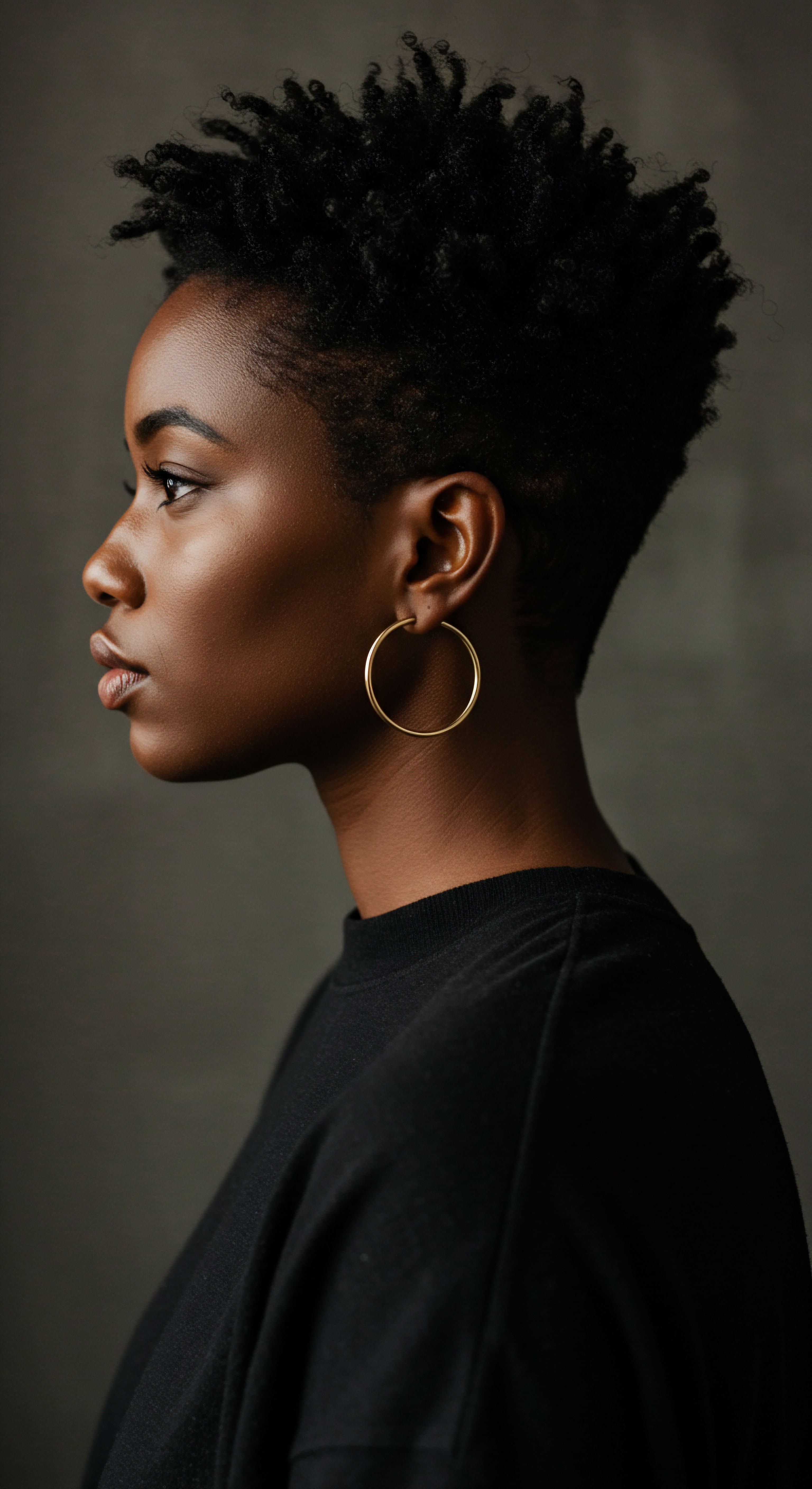
Echoes of History ❉ Connecting Past Hair Practices to Current Integrity Challenges
For textured hair, particularly within Black and mixed-race communities, the conversation around curl integrity is deeply intertwined with historical and cultural practices. Generations have navigated societal pressures to conform to Eurocentric beauty standards, often leading to the widespread use of chemical relaxers and hot combs to achieve straightened styles. These methods, while offering a perceived sense of acceptance or manageability, frequently came at the expense of the hair’s natural structure.
The legacy of these practices means many individuals today are working to repair damage from years of chemical alteration or heat manipulation. This historical context shapes current hair journeys, emphasizing the importance of restorative care and a celebration of natural curl patterns. Understanding this continuum allows for a more compassionate and informed approach to achieving and sustaining curl integrity, recognizing that the hair’s present state often reflects a past influenced by more than just personal preference.
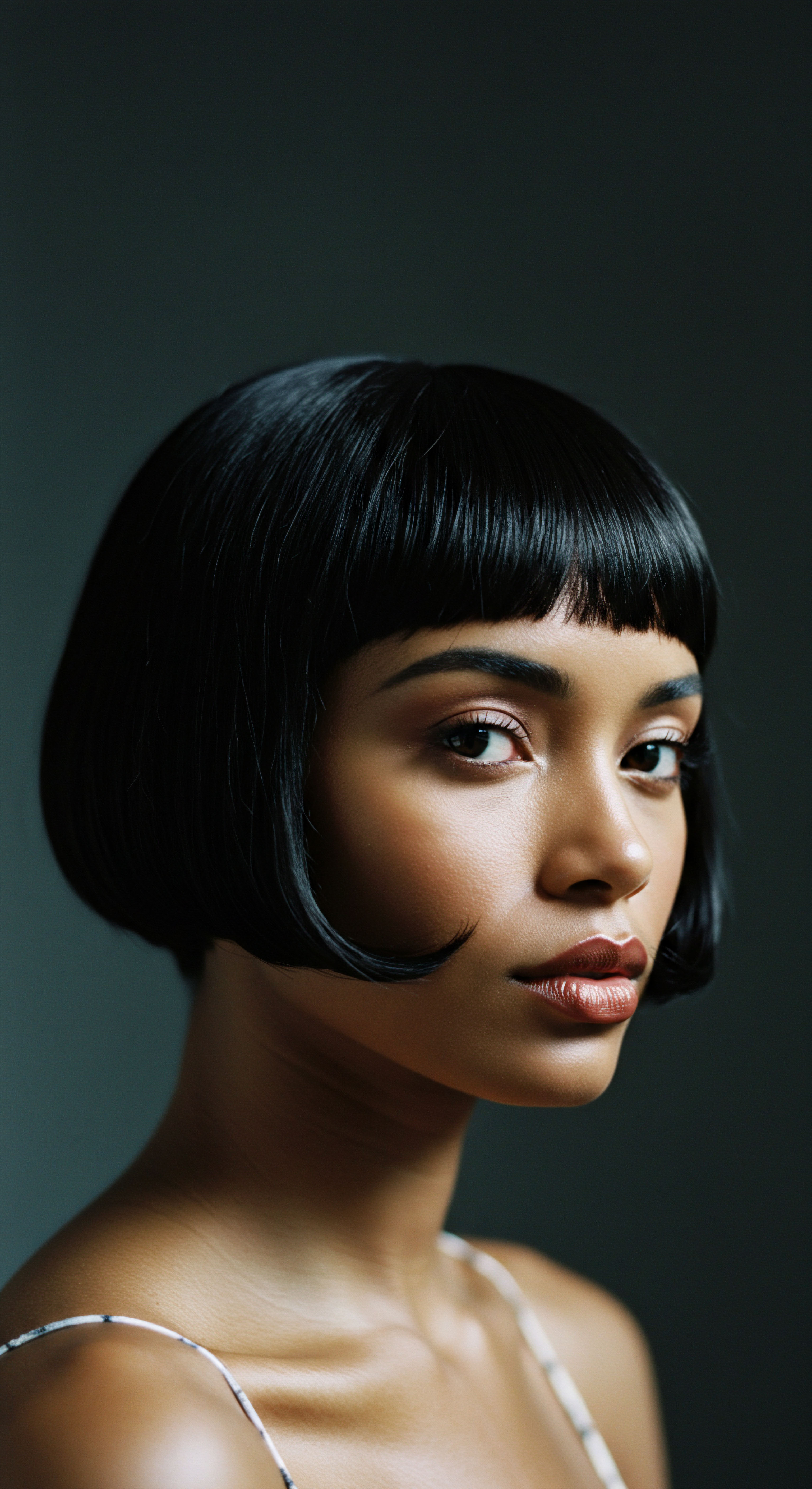
Advanced
At its most sophisticated level, Curl Integrity transcends a mere physical description, evolving into a profound, holistic concept that encompasses the structural, genetic, environmental, and socio-cultural dimensions of textured hair. This advanced interpretation moves beyond the visible strand, inviting a deeper intellectual and empathetic engagement with the intricate biological mechanisms and the historical currents that shape hair’s vitality. It is a comprehensive explication, drawing from scientific rigor and cultural scholarship, to reveal the full significance and implications of maintaining the hair’s authentic state. This perspective is invaluable for experts, researchers, and those seeking a profound understanding of hair as a complex, living system within its broader human context.
Understanding the profound meaning of Curl Integrity from an advanced viewpoint requires an appreciation for the molecular symphony occurring within each strand, coupled with an awareness of the external forces—both natural and societal—that continuously interact with it. This analysis reveals why some hair responds differently to treatments, why certain care regimens are more effective for specific hair types, and how the journey of hair health can reflect a larger narrative of identity and resilience. Each sentence in this discourse aims to provide maximum insight, fostering a nuanced understanding from a highly informed perspective.
Advanced Curl Integrity signifies a holistic concept integrating genetic, structural, environmental, and sociocultural influences on textured hair’s vitality.
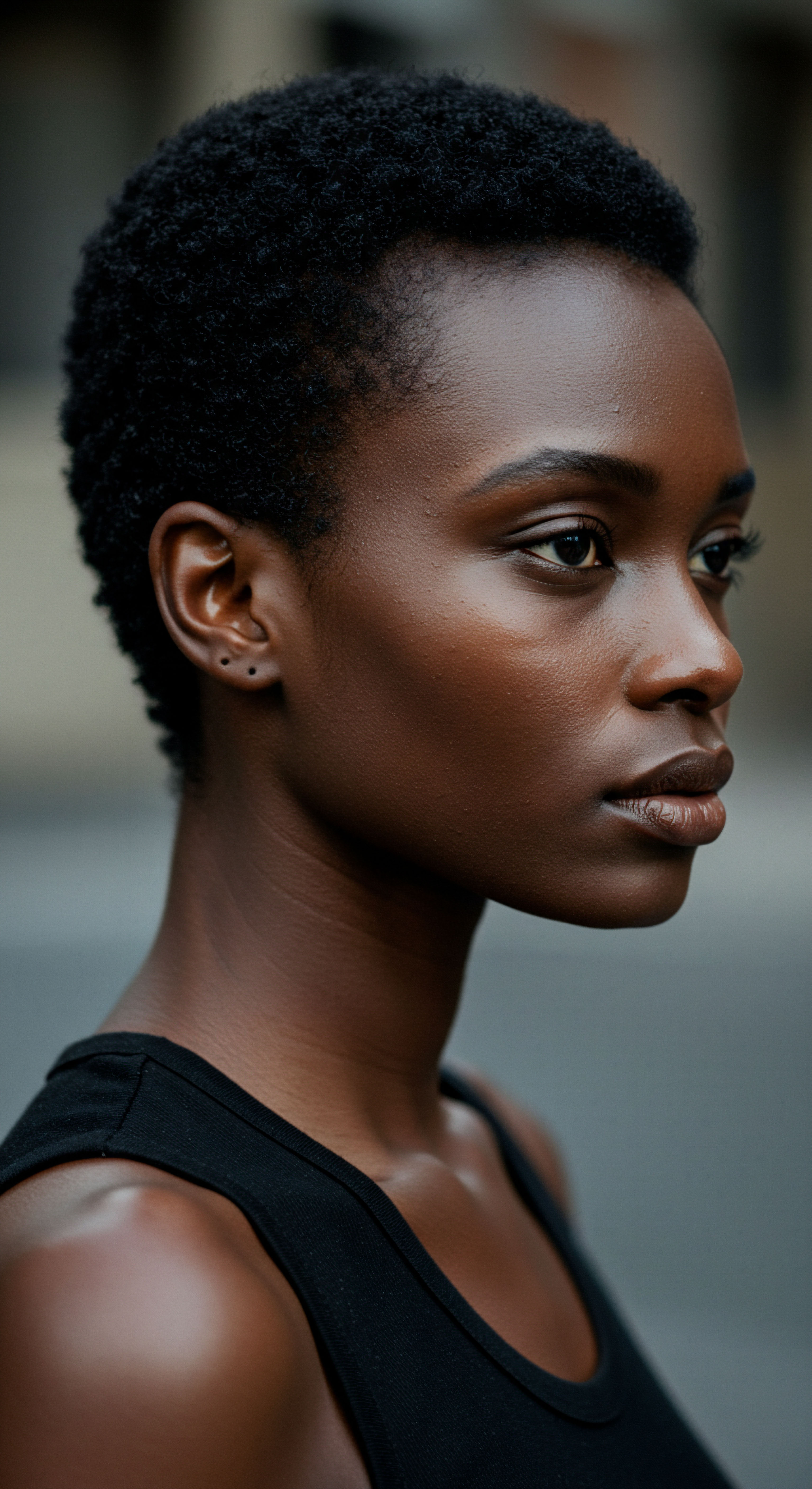
The Molecular Symphony of a Curl ❉ A Deep Dive into Chemical Structure
The remarkable resilience and form of a curl are rooted in its precise molecular architecture. Keratin, the primary protein of hair, forms complex α-helical structures that coil together to create intermediate filaments. These filaments are further organized into macrofibrils within the hair cortex.
The stability of these structures is significantly dependent on Disulfide Bonds, strong covalent linkages between cysteine amino acid residues. These bonds act as internal “springs,” allowing the hair to stretch and return to its original shape, defining its elasticity and contributing to its natural curl pattern.
Beyond proteins, the hair’s lipid layers, particularly the 18-methyl eicosanoic acid (18-MEA) covalently bound to the cuticle surface, provide a hydrophobic barrier that repels water and maintains moisture balance. This protective lipid layer, along with the intercellular cement, contributes to the integrity of the cuticle, ensuring its scales lie flat and protect the underlying cortex. Any disruption to these disulfide bonds or the lipid layers, whether from chemical processes like relaxers or excessive heat, fundamentally compromises the hair’s inherent strength and its ability to maintain its natural curl.
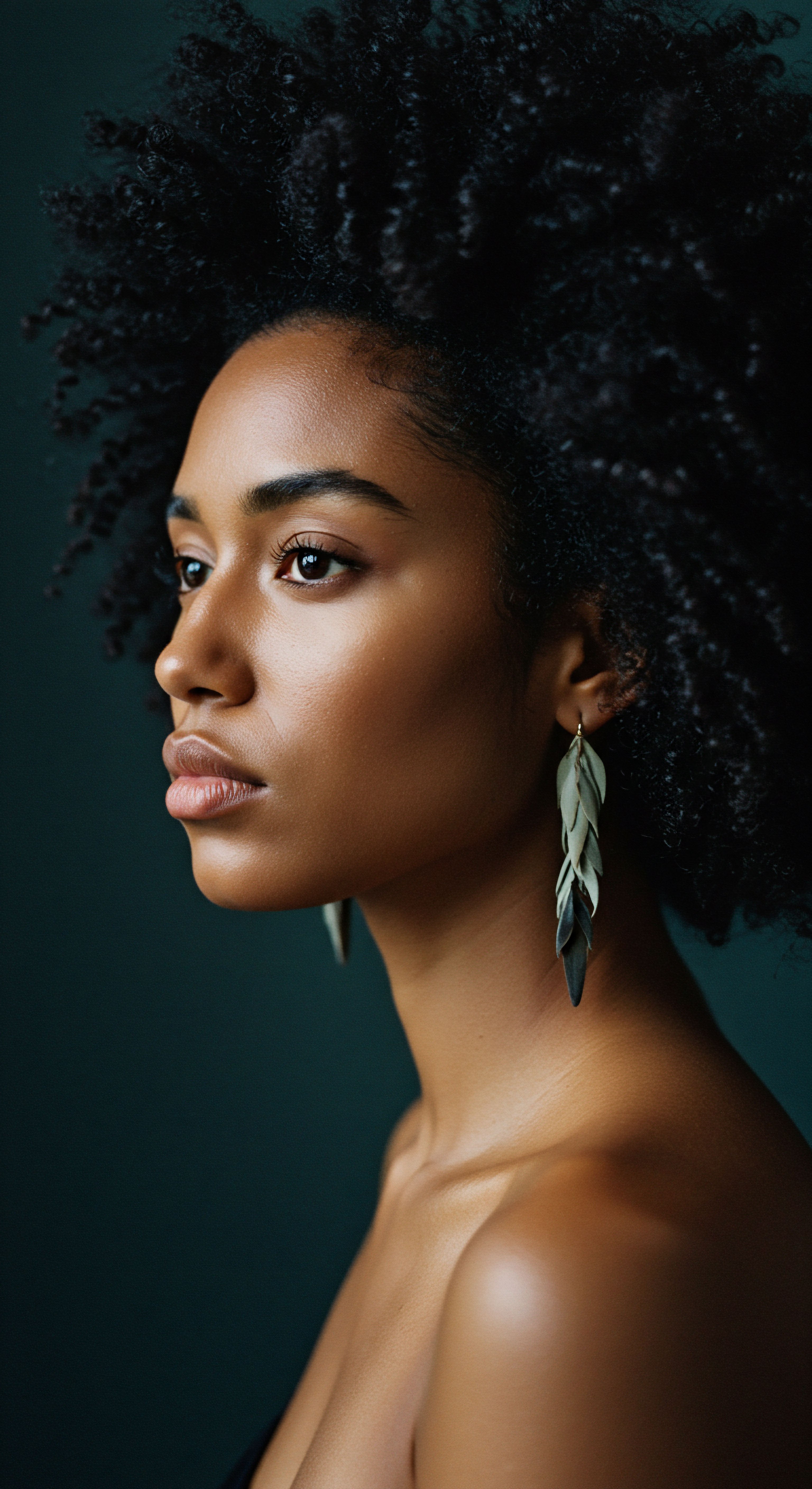
Genetic Blueprints and Their Expression ❉ How DNA Defines Initial Integrity
The intrinsic nature of curl integrity begins at a genetic level. The unique helical structure of textured hair follicles, which are typically elliptical in cross-section, dictates the formation of coils and kinks. Specific genes influence the shape of the hair follicle, the distribution of keratin proteins, and the arrangement of disulfide bonds, all contributing to the hair’s natural curl pattern and its baseline mechanical properties. Genetic predispositions determine the hair’s density, diameter, and its inherent susceptibility to environmental stressors.
While external factors and care practices significantly influence hair health, recognizing the genetic blueprint of an individual’s curls provides a foundational understanding. This genetic legacy informs the hair’s optimal state and its natural limitations, guiding realistic expectations and tailoring care regimens to work harmoniously with, rather than against, the hair’s innate characteristics. Understanding these inherent properties is a critical step in preserving the hair’s integrity from its very origin.

Environmental Choreography ❉ External Factors Shaping Hair Health
The environment plays an undeniable role in the ongoing saga of curl integrity. Humidity levels, for instance, directly influence the hair’s moisture content, causing high porosity hair to swell and frizz in damp conditions, while low porosity hair might struggle to absorb moisture. Ultraviolet (UV) radiation from the sun can degrade keratin proteins and melanin, leading to color fading, dryness, and reduced elasticity. Pollution, with its particulate matter and airborne chemicals, can accumulate on the hair shaft, contributing to dullness and potential damage.
Considering these environmental stressors is paramount for comprehensive hair care. Protective measures, such as UV filters in products, scarves or hats for sun exposure, and regular, gentle cleansing to remove pollutants, become integral to preserving the hair’s long-term integrity. This proactive approach safeguards the delicate balance of the hair’s structure against the constant interplay of external forces.
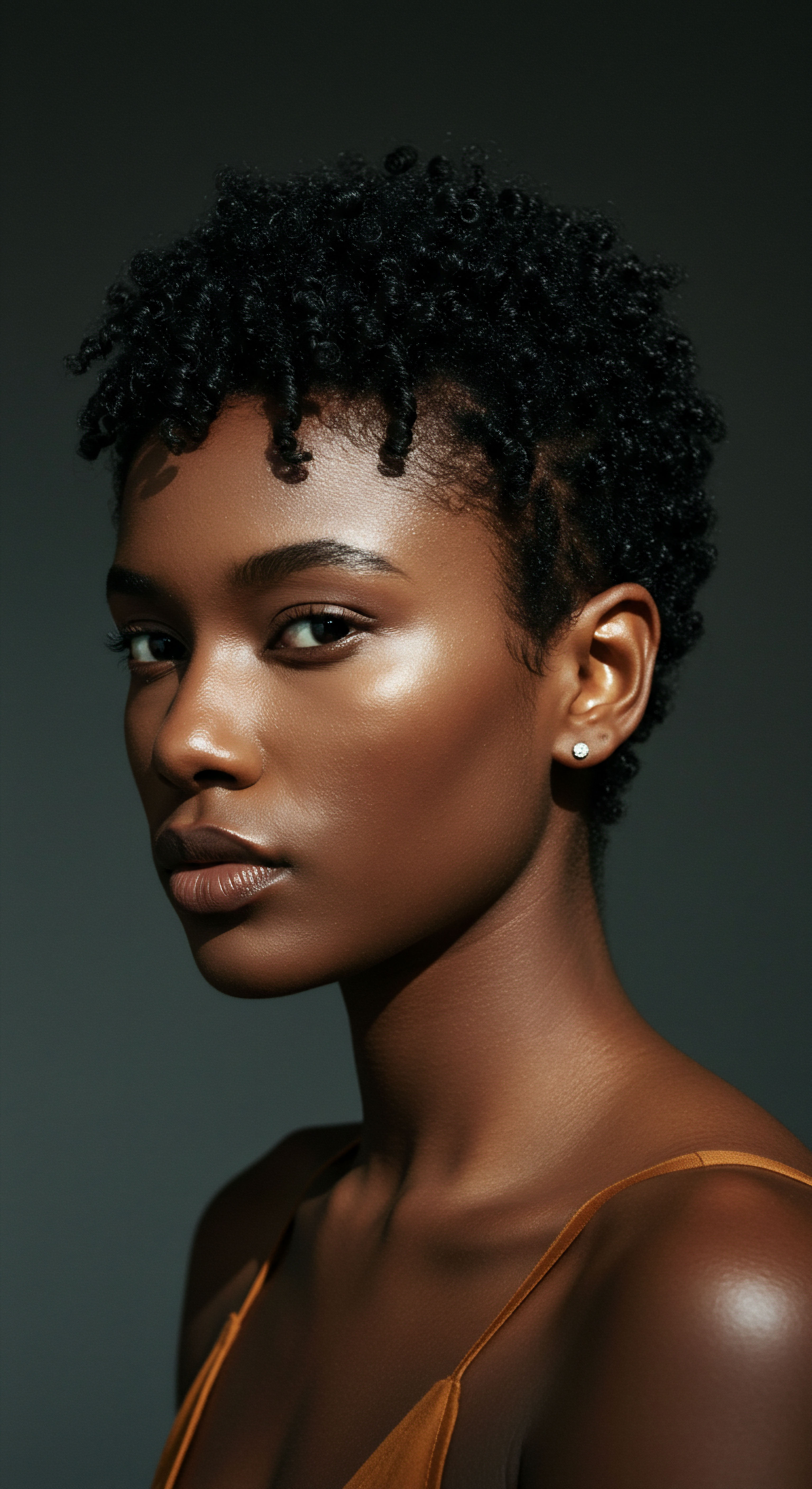
Beyond the Strand ❉ Sociocultural Integrity and Its Profound Implications
The discourse surrounding Curl Integrity for textured hair extends far beyond its physical attributes, reaching into profound sociocultural dimensions. For generations, particularly within Black and mixed-race communities, hair has served as a powerful symbol of identity, heritage, and resistance. Yet, it has also been a site of immense pressure to conform to narrow, often Eurocentric, beauty ideals. This historical context illuminates a critical, yet often unacknowledged, aspect of integrity ❉ the integrity of choice, self-perception, and overall well-being in relation to one’s hair.
The pervasive use of chemical relaxers, for instance, became a deeply ingrained practice, driven by a complex interplay of aesthetic preference, perceived professionalism, and the desire for easier manageability. While individual reasons varied, the broader societal narrative often implicitly or explicitly promoted straightened hair as the standard. This societal influence on hair choices carries tangible, long-term implications for health. A study from the Black Women’s Health Study at Boston University, published in the American Journal of Epidemiology in 2012, revealed that frequent and long-term use of hair relaxers was associated with an increased risk of uterine leiomyomata (fibroids) in African American women.
Specifically, the incidence rate ratio comparing ever with never use of relaxers was 1.17 (95% CI ❉ 1.06, 1.30), with positive trends observed for frequency and duration of use, as well as the number of burns experienced. This data point, while not directly about hair breakage, underscores a deeper, more controversial truth ❉ the pursuit of a certain aesthetic, influenced by societal norms, can lead to systemic health disparities. It forces a re-evaluation of what “integrity” truly means—extending beyond the physical state of the curl to encompass the integrity of personal health and self-acceptance in the face of external pressures.
This perspective challenges us to consider the long-term consequences of practices that compromise natural hair structure, not just cosmetically, but systemically. Reclaiming and celebrating natural curl integrity, therefore, becomes an act of self-determination, a profound statement of cultural pride, and a conscious choice towards holistic well-being. It is a recognition that true beauty blossoms when hair is allowed to exist in its most authentic, healthy form, free from the constraints of imposed standards.

Reclaiming and Sustaining Wholeness ❉ Advanced Care Principles
Sustaining advanced curl integrity requires a strategic approach that goes beyond basic conditioning. It involves implementing molecular repair techniques, such as bond-building treatments that work to reconnect broken disulfide bonds within the hair shaft. These specialized treatments help to restore the hair’s internal structure, enhancing its strength and elasticity from the inside out.
Preventative measures are equally crucial. This includes using advanced heat protectants that create a thermal barrier, minimizing damage during styling. Employing low-manipulation styling techniques and protective styles helps to reduce mechanical stress and friction.
Regular trims to remove split ends prevent further damage from traveling up the hair shaft. These practices, combined with a deep understanding of the hair’s needs, create a comprehensive regimen for long-term curl integrity.
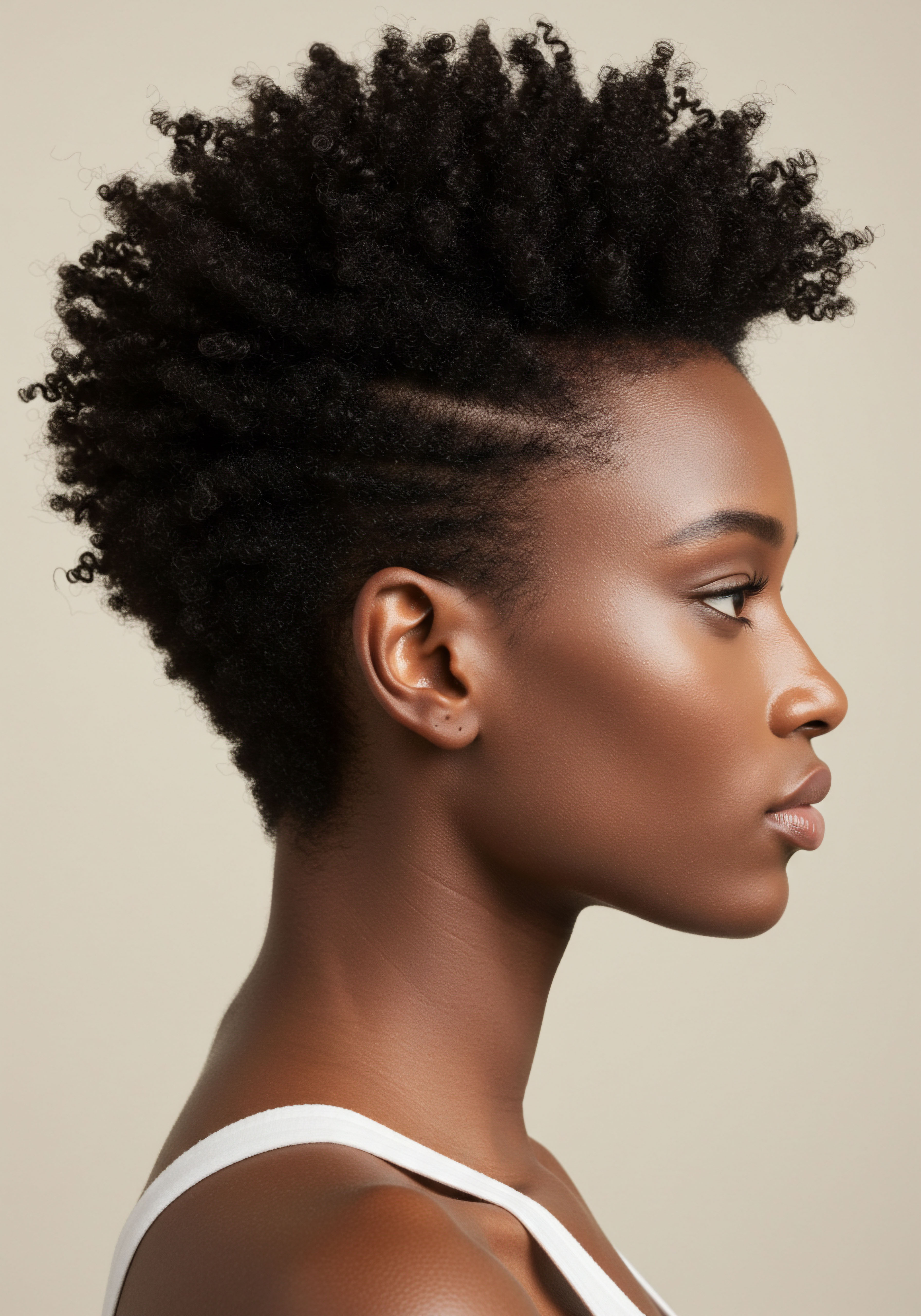
The Business of Integrity ❉ Industry Perspective
From a corporate and expert perspective, the concept of Curl Integrity is reshaping the textured hair care industry. It moves beyond superficial claims to a demand for products grounded in genuine hair science and ethical formulation. Companies are increasingly investing in research and development to create ingredients and technologies that truly support the hair’s natural structure, rather than merely altering it.
This shift necessitates a focus on transparency in ingredient lists, educating consumers on the long-term effects of various chemicals, and promoting practices that prioritize hair health over fleeting trends. The market for textured hair care, estimated at billions of dollars, is evolving to reflect a growing consumer base that values authenticity and sustainable health. This signals a future where industry success is increasingly tied to a profound respect for, and scientific understanding of, the inherent integrity of every curl.

Reflection
The journey with Curl Integrity is a deeply personal one, a continuous dialogue with the living crown we carry. It is a gentle reminder that our hair, particularly textured hair, is not merely an accessory, but a vibrant part of our identity, deeply connected to heritage, self-expression, and well-being. This ongoing exploration of its meaning invites us to move beyond superficial concerns, delving into the intricate dance of science and spirit that defines each coil and kink. We learn to listen to our hair, understanding its needs, and responding with a gentle wisdom that honors its inherent design.
This dedication to integrity cultivates not only healthier strands but also a profound sense of self-acceptance and a celebration of the diverse beauty that flourishes when we allow our curls to exist in their truest, most resilient form. It is a path of discovery, where every choice, every ritual, becomes an affirmation of the remarkable wholeness within us.

References
- Davis-Sivasothy, Audrey. The Science of Black Hair ❉ A Comprehensive Guide to Textured Hair Care. Saja Publishing Company, LLC, 2011.
- Coogan, P. F. Rosenberg, L. Palmer, J. R. Strom, B. L. & Adams-Campbell, L. L. Hair relaxer use and risk of uterine leiomyomata in a prospective cohort of African American women. American Journal of Epidemiology, 176(11), 1011-1018, 2012.
- Robbins, Clarence R. Chemical and Physical Behavior of Human Hair. Springer, 5th edition, 2012.
- Aguh, Crystal, and Okoye, Ginette. Fundamentals of Ethnic Hair ❉ The Dermatologist’s Perspective. Springer, 2024.
- Ruetsch, S. B. Yang, B. & Kamath, Y. K. Cuticular damage to African-American hair during relaxer treatments—A microfluorometric and SEM study. IFSCC Magazine, 11, 131-137, 2008.
- Khumalo, N. P. Stone, J. Gumedze, F. McGrath, E. Ngwanya, M. R. & de Berker, D. ‘Relaxers’ damage hair ❉ Evidence from amino acid analysis. Journal of the American Academy of Dermatology, 62(3), 402-408, 2010.
- Ribeiro, A. Cavaco-Paulo, A. & Nogueira, D. Hair resistance to mechanical wear. Wear, 470-471, 203612, 2021.
- Cruz, C. F. Fernandes, M. M. Gomes, A. C. Coderch, L. Marti, M. Mendez, S. et al. Keratins and lipids in ethnic hair. International Journal of Cosmetic Science, 35(3), 244-249, 2013.